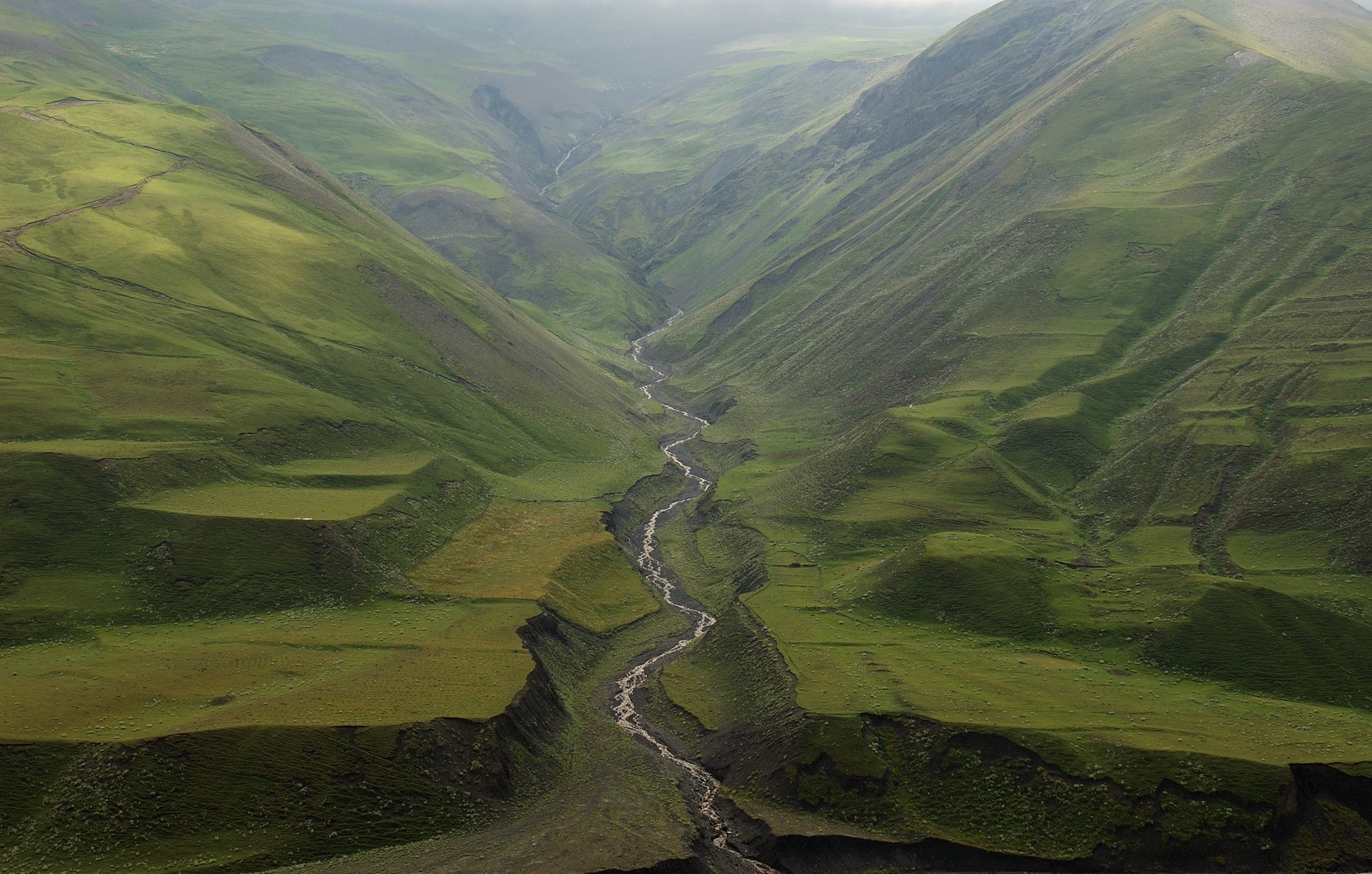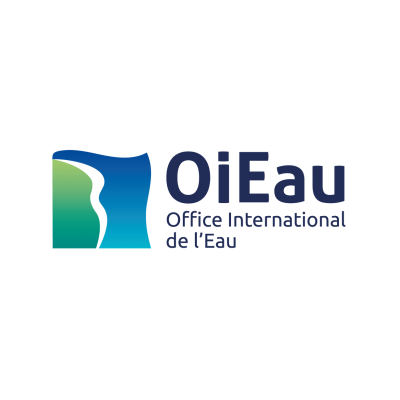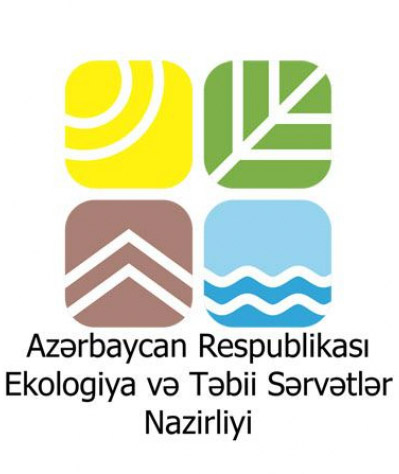| Ekoportal |
|---|
|
|
Groundwater
In general, according to the calculations made in different years for the republic, the regional forecast exploitation reserves of underground water are 23764.28 thousand m 3 /day (or about 9 billion m 3 per year). Approved in the Reserves Commission - 12079.4 thousand m 3 /day, including in mountainous regions - 126.4 thousand m 3 /day. The total mineralization of underground water in the volume of 1592.1 thousand m 3 /day from these resources is between 1-3 g/l, which can be used for irrigation and technical purposes.
At the same time, the territory of the Republic of Azerbaijan is rich in highly mineralized thermal and hydromineral raw waters of thermal energy and industrial importance, which have been found in the deep horizons of the earth's surface.
The total resources of thermal and industrial waters in the territory of the Republic of Azerbaijan are calculated as 419093 m 3 /day.
Thermal waters
Scientific and experimental research is being conducted in many developed countries of the world to solve the problems of using non-traditional solar, wind and underground thermal water energy. The fact that thermal waters are an accumulator of underground thermal energy and have high heat-energy capacity characterizes thermal waters as a particularly important energy carrier among non-traditional energy sources.
In Azerbaijan, in 1964-1970, geological-exploration works were carried out for the study of thermal waters in the Talish zone (Astara, Lankaran and Masalli regions). For this purpose, 17 exploratory wells were dug and thermal waters with a temperature of 38-64°C were found in all of these wells. In order to use them as heat energy, 10 greenhouses were created for growing vegetables (tomatoes, cucumbers) in the winter months, and the possibility of buying crops 2-3 times a year was determined.
Thermal waters were discovered in oil exploration wells dug in the Carly structure, with a depth of 3200-4500 m, their total discharge was 2500 m3, and the surface temperature was 72-97°C. Thermal waters with a total discharge of more than 30,000 m 3 /day and a temperature of 50-81°C on the surface of the earth were discovered by
means of exploratory wells of the Caspian coast (Khudat-Khachmaz) zone with a depth of up to 3000 m .
Exploration of the Khudat-Khachmaz thermal water field, discovered in the Guba-Khachmaz zone, was carried out and exploitation reserves in the amount of 25.7 thousand m 3 /day were confirmed and registered in the State Balance.
The forecast exploitation reserves of thermal waters in the Republic are estimated as follows:
- The southern slope of the Greater Caucasus - 2000 m3/day (t-30-50°C);
- Guba-Khachmaz zone - 21000 m3/day (t-40-85°C);
- Absheron peninsula - 20000 m3/day (t-40-90°C);
- The mountainous part of the Lesser Caucasus - 4000-5000 m3/day (t-30-74°C);
- Nakhchivan MR - 3000 m3/day (t-40-50°C);
- Talish mountainous region - 15000 m3/day (t-31-43°C);
- Lankaran plain - 7000-8000 m3/day (t-44-64°C);
- Kura depression - 170000 m3/day (t-30-71°C);
- Across the Republic - 249,000 m3/day.
The analysis of geological materials of thermal water deposits shows that the operational resources of thermal water as a whole are many times more than what was mentioned above.
Mineral waters
Mineral water deposits, which have a special place in the health of the population, are concentrated in 200 groups, more than 1000 of their natural outlets have been registered. However, only 30 mineral groups have been fully geological-researched in the water field and exploitation reserves have been confirmed.
16 treatment-tables and 14 treatment-important mineral water sources in the territory of the Republic of Azerbaijan (Ilisu, Chagan, Chukhuryurd, Sirab (4 beds), Vaikhir (2 beds), Badamli (2 beds), Daridag, Shirlan, Turshsu, Minkend , Upper Istisu, Lower Istisu, Tutkhun, Mozchay, Koturlu, Keshdak, Karasu, Galaaltı, Meşasu, Ibadisu, Surakhani, Mardakan¸ Pirshagi Buzona, Bilgah) hydrogeological studies were conducted and their exploitation resources were calculated and confirmed.
Very valuable mineral waters are widespread, especially in the territory of Nakhchivan MR. In this area, one can find analogues of most of the mineral waters known in the world. On the territory of the Autonomous Republic, the operational reserves of mineral water as treatment-drinking water are 690,000 liters per day Badamli (Narzan type) in Shahbuz district, Sirab (Barjomi type) - 178 thousand liters and (Narzan type) - 1468 thousand liters in Babek district, Vayxir (Pyatigorsk type) - 270 thousand liters, Minegorsk-type Daridag with balneological purpose - 4507 thousand liters was approved.
However, the operating and forecast reserves of this or that mineral water deposit in the territory of Nakhchivan MR are many times higher than these figures. In Kalbajar district, the operational reserves of the Upper Istisu waters, similar to the famous "Karlovi Vary" type mineral water deposit, are 82,000 liters per day, Lower Istisu - 260,000 liters, Koturlu - 70,000 liters, and Tutgun - 600,000 liters per day.
A sanatorium-resort complex and a mineral water factory used to operate here on the basis of mineral waters. The operating and forecast reserves of mineral waters of Kalbajar region are many times more than the above figures.
In fact, the exploitation resources of these waters are many times greater, and they should be made available to the people as a very valuable natural resource.
Waters of industrial importance
The discovered iodine-bromine industrial waters are concentrated in 5 main deposits in the territory of the Republic: Neftchala, Khilli, Babazanen, Mishovdag and Bina-Hovsan deposits. The first 4 fields are located in the southeastern part of the Kura depression, and the Bina-Hovsan field is located in the territory of the Absheron peninsula.
Due to the high mineralization (up to 210-220 g/liter) of the deep underground waters with a temperature of 35-65ºC, located in the area of the lower Kura depression of the Absheron Peninsula and the Mishovdag, Babazanen, Khilli and Neftchala deposits, they are classified as industrially important iodine-bromine waters. are being
At the same time, during these years, for the purpose of studying groundwater important for alkaline, soda, rare metal and other hydromineral raw materials, in the flanks of the Baku mine on the Absheron peninsula, Zira, Binagadi, Kurdakhani, Garaheybat, Yasamal valley, Bibiheybat, Ateshgah, Novoastrakhanka of Shamakhi-Gobustan oil and gas region. , Chevildag, Shorsulu of the Kura depression, Muradkhanli, Jarli, Zardab, Gedisu of the Caspian oil and gas region, Yalama, Zagli, Zeyve, Chandahar-Zarat, Gaynarcha, Talabi, Tangialti, Saadan, Tarsdallar of the Kura-Ganikh interriver oil and gas region, Koyruk- Hydrogeological studies were conducted in Keylan, Beyuk Palantöken, Sajdag, Udobna areas, and a technical and economic report was prepared on the possibility of using soda water of Western Absheron.As a result of special hydrogeological research conducted on thermal waters, which started from the beginning of the 60s of the last century and continued until the end, 9 hydrogeothermal regions were separated in the territory of the Republic of Azerbaijan, depending on the degree of suitability for use in various fields of study and national economy, as well as geostructural, hydrogeothermal and geothermal conditions. :
- Caspian-Guba
- Lankaran sloping plain
- Absheron Peninsula
- Shamakhi-Gobustan
- Kura depression
- Jalilabad-Zar
- Ajinohur
- Kura-Kanikh inter-river area
- Nakhchivan


